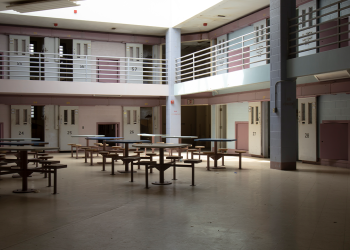The U.S. State Department has officially designated the militant group The Resistance Front (TRF) as a global terrorist organization. According to a statement issued by the department, TRF is a front and proxy group for the banned militant organization Lashkar-e-Taiba and claimed responsibility for the Pahalgam attack on April 22, 2025, which resulted in the deaths of 26 civilians. The statement emphasized that the Pahalgam assault was the deadliest attack on civilians in India since the 2008 Mumbai attacks—also attributed to Lashkar-e-Taiba.
Indian External Affairs Minister S. Jaishankar welcomed the U.S. action, calling it a reflection of the growing India-U.S. cooperation on counterterrorism and reaffirmed India’s policy of “zero tolerance for terrorism.”
The U.S. government said its decision reflects a commitment to protecting national security interests and ensuring justice for the victims of the Pahalgam attack. The timing, however, has raised questions as to why the group is being designated now—particularly given that TRF initially claimed responsibility for the Pahalgam attack on social media, only to deny involvement three days later via a statement on Telegram.
The attack significantly escalated tensions between India and Pakistan, culminating in reciprocal airstrikes in May 2025. A ceasefire was later brokered with U.S. mediation.
Despite widespread media attribution, a closer examination of TRF’s initial statement revealed inconsistencies. The message, shared widely online, lacked the group’s name and official logo—elements that had appeared in previous TRF statements. Moreover, the language and branding used in the statement were inconsistent with the group’s typical communication style. The statement identified the group only as “Kashmir Resistance,” which raised doubts about its authenticity.
Analysts say that the U.S. decision to blacklist TRF as a terrorist organization comes as a diplomatic win for India, which has long sought such action. India has consistently accused TRF of being a Pakistani proxy—claims Pakistan strongly denies. Vivek Mishra, Deputy Director of the Strategic Studies Program at the Observer Research Foundation, told BBC Urdu that this decision reflects the progress of quiet backchannel diplomacy between India and the U.S. following “Operation Sindoor.” He believes the move will tarnish TRF’s global image and curtail the group’s ability to portray itself as a “non-terrorist resistance” group.
Experts also note that the designation may bolster India’s attempts to take action against TRF under UN Security Council Resolution 1267, which would allow for asset freezes, travel bans, and arms embargoes. However, previous efforts have been blocked by Pakistan. The move may also place additional pressure on China, which has been accused by Indian officials of obstructing similar counterterrorism resolutions at the UN.
India’s former Kashmir police chief Shesh Paul Vaid called the U.S. decision a diplomatic achievement, noting that Indian officials had campaigned extensively to raise awareness of TRF’s activities. Meanwhile, Anshu Joshi, a professor of international affairs at Jawaharlal Nehru University, noted that the decision shows the U.S. acknowledges India’s stance on TRF being a Pakistani proxy.
Still, many analysts remain skeptical about the long-term effectiveness of the move, warning that the group may simply rebrand under a new name to evade sanctions—a common tactic used by militant networks. India has previously submitted multiple requests to the UN to list TRF as a terrorist group, alleging that Pakistan had lobbied to have TRF’s name removed from official condemnations related to the Pahalgam attack.
Indian MPs, while traveling abroad to brief international counterparts on the attack, consistently named TRF as the responsible party and accused Pakistan of sponsoring the violence. Although India and the U.S. have strengthened counterterrorism cooperation in recent years, there had been signs of strain after the Pahalgam incident, particularly due to the U.S. administration’s neutral language in early statements.
Despite some unease over trade talks and geopolitical maneuvering, analysts believe the U.S. action could mark a positive turn in bilateral relations. Visiting fellow Velina Tchakarova of the ORF think tank said this move could serve as a strong signal ahead of any potential trade deal between the two nations.
However, Professor Anshu Joshi cautioned against assuming the designation was directly tied to trade negotiations, emphasizing that such decisions stem from multiple complex factors and may take time to materialize in diplomatic outcomes. National security analyst Praful Bakshi added, “The U.S. will always act in its national interest—and so should India.”
The Resistance Front, as defined by the U.S. State Department, is a proxy of Lashkar-e-Taiba and emerged in early 2020, following the Indian government’s abrogation of Jammu and Kashmir’s special status in August 2019. The group has claimed responsibility for attacks on civilians—especially migrants from other Indian states—as well as minority Hindu communities in Kashmir. However, TRF has also denied involvement in some attacks attributed to it by Indian media.
TRF’s first public claim came on October 12, 2019, for a grenade attack in Srinagar. On April 18, 2020, it claimed responsibility for the killing of three Indian Reserve Police Force personnel in Baramulla district. Over the past seven years, the group has continued to target Indian security forces, police, and settlers.
Despite its rising profile, little is known about TRF’s leadership or organizational structure. According to BBC Monitoring, the group’s media operations remain less sophisticated compared to groups like al-Qaeda or ISIS, primarily relying on Telegram for propaganda under the handle “Resistance Media.”
As the geopolitical consequences of the U.S. designation unfold, experts stress the need for vigilance and realism in assessing its practical impact on terrorism, diplomacy, and Indo-U.S. relations going forward.








